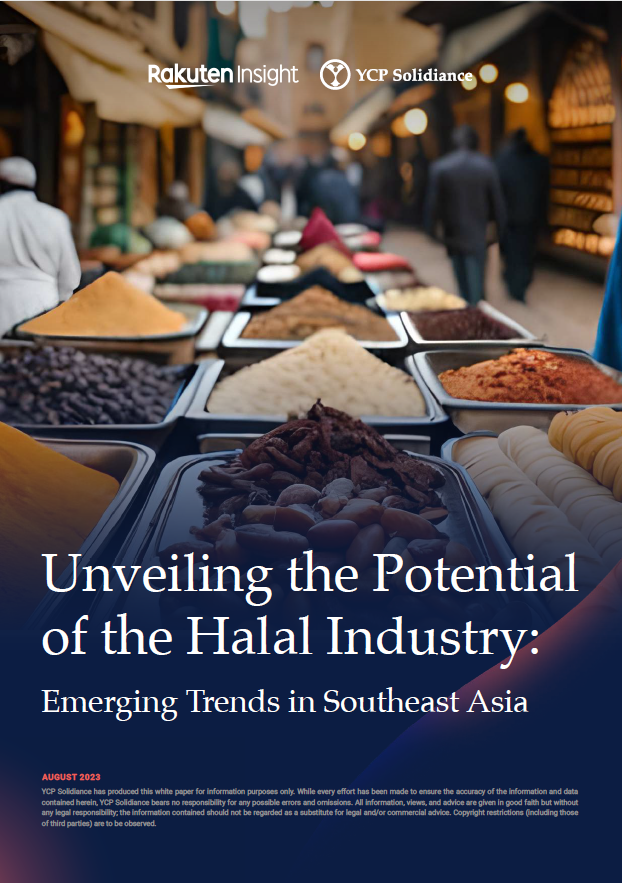Unveiling the Potential of the Halal Industry: Emerging Trends in Southeast Asia
Originally published by YCP Solidiance, 11th of Aug 2023
The State of the Global Islamic Economy Report (GIE) 2022 reveals that the world’s Muslim population of 1.9 billion people spent around USD 2.0 trillion in 2021 on halal goods and services, which reflects a strong CAGR of 8% from 2015 to 2021. Although the projected CAGR from 2021 to 2025 is slightly lower at 7.5% due to supply chain disruptions caused by the COVID-19 pandemic and the Ukraine war, the global halal industry is expected to continually expand.
Industry growth is driven by several key factors, namely: the growing Muslim population and adherence to halal practices; rising demand for halal products from non-Muslim consumers; the implementation of national strategies for halal industry development, and the establishment of a digital halal ecosystem due to adoption of technology within the sector.
However, the global halal industry also faces significant challenges due to the lack of a standard regulatory system across countries, which can potentially increase production costs or limit market access. In the halal industry in Southeast Asia (SEA), where there are several key member countries of the Organisation of Islamic Cooperation (OIC), the challenges faced are particularly evident.

YCP Solidiance’s report, powered by Rakuten Insight data, provides an overview of the future outlook of the halal industry in SEA by looking into the leading players, challenges, and opportunities for growth in the region, taking a deep dive into halal consumer goods and Islamic finance in Indonesia, Malaysia, and Singapore as key examples in SEA. To learn more about how companies can enter, grow, and succeed in SEA’s halal industry, download the free report today.